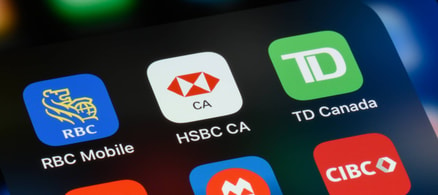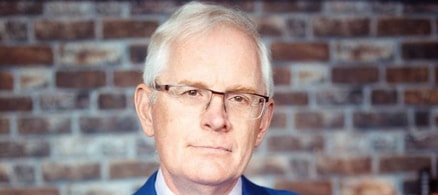Why the bank can’t just make it happen now
The bank’s announcement Wednesday stated it’s prepared to “act more forcefully” if needed to get inflation down to its two per cent target. Orlando says that likely means another 0.5 per cent increase in July, and potentially a few more hikes later in the year.
Before the announcement, there were rumblings that the bank may even move to increase rates by 0.75 per cent. But as Moshe Lander, an economist with Concordia University, puts it: “That sort of aggressive move has the ability to take some of the starch out of the Canadian economy in the process.”
The bank, he adds, isn’t trying to sink the Canadian economy — it’s just hoping to relieve some pressure. However, addressing the real issues behind inflation is challenging because some pressure is coming from sources on the supply side that the bank has no jurisdiction over.
Take food prices, for example.
“When you have Russians hoarding grain and bombing grain storage facilities in Ukraine … you can increase interest rates as much as you want; it's not going to make bread appear on the shelves,” says Lander.
The same goes for gas prices. The high price of oil — thanks in large part to the war in Ukraine — can’t be fixed by increasing interest rates.
But that doesn’t mean rate hikes are completely useless.
“This is exactly how the central bank needs to respond,” says Orlando.
“The hope is that some of those international factors stop putting such a strong pressure on inflation and eventually these rate hikes start to play an impact … and then the Bank of Canada at that point in time can start to ease some of their hawkish rhetoric.”
Maximize Your Tax Refund with TurboTax Canada!
Simplify tax season with this user-friendly software. Get step-by-step guidance, maximize deductions, and file with confidence. Trusted by millions, TurboTax Canada ensures accuracy and peace of mind. Start your taxes today and get the refund you deserve
Get the tax refund you deserveTurning the economy around takes time
Even though this is the third rate hike from the bank this year, economists would caution consumers from expecting significant relief in the near future.
“I think that there's a big mistake among the general public that when they hear the headline news ‘Bank of Canada aggressively increases interest rates,’ they assume that in two weeks from now, we should hear that inflation is back to where it was,” says Lander.
The reality, he adds, is it takes months for these actions to have an effect — in the best-case scenario, Canadians should see changes within three to six months.
Orlando’s timeline is similar, as he anticipates that by the end of the year some of the demand driving up inflation should start to wane. For now, while consumers have few other choices than riding this out, he would remind them that the situation could be much worse.
Right now, most Canadians feel stable in their jobs and comfortable they could find another if they need it. The increase in workers looking for something new is mostly driven by those who don’t feel it’s an urgent move and are being enticed away by higher wages, according to the latest Indeed Job Search Survey.
Additionally, unemployment is incredibly low — 5.2 per cent in April, according to Statistics Canada — and consumers are holding onto a record amount of savings from the last few years. With savings account interest rates increasing, that leaves a lot of people well-positioned to weather the storm.
With all that in mind, Orlando says it’s important to recognize that many Canadians are in a very comfortable position to ride this out.
“Obviously, if the employment market changes and we start seeing job losses, that's a whole different story — but that is not the environment we have right now,” says Orlando.
There are ways to protect your household
Lander understands that offers little comfort to those who are already feeling pressure on their household budget — whether that’s at the pump or on the cost of their variable-rate loans.
“What consumers can do at this point is they can try and alleviate some of their own inflationary pressures, through better buying and paying a lot more attention to what they're buying,” says Lander.
One simple way of doing this is looking at the cost per unit on price tags. Lander offers the example of two bags of potato chips: one costs $2.99 and the other costs $1.99 — but if that $2.99 bag has twice the amount of chips, it’s going to have a lower cost per unit, which means you’re getting better value for your money.
“We do have to ride it out,” says Lander. “But we’re not completely powerless to try and mitigate some of our own inflationary pressures through just smarter buying habits.”
Sponsored
Trade Smarter, Today
With CIBC Investor's Edge, kick-start your portfolio with 100 free trades and up to $4,500 cash back.






